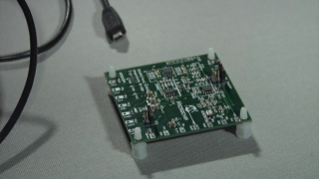
Join Microchip’s Virtual events on Space-Grade development. Specialists from Microchip will reveal the potential for using scalable development to reduce risk, and accelerate design, by moving from rad-tolerant to rad-hard components. Weekly Virtual Space events start Tuesday 18th May 2021 at 16:00pm CET.
Week 1: COTS Rad-Tolerant to Rad-Hardened Microprocessors and Microcontrollers Scalable Solutions
Tuesday 18th May, 16:00pm CET | Presenter: Nicolas Ganry

Presentation of the COTS rad-tolerant concept applied to microcontrollers and the unique ARM M7 SoC scalable solution to rad-hard devices. This COTS based approach benefits from a widely deployed software & hardware ecosystem enabling a wide range of space applications.
Week 2: Save Power and System Cost with Microchip Radiation-Tolerant FPGAs
Tuesday 25th May, 16:00pm CET | Presenter: Ken O'Neill

Updates on Microchip’s radiation-tolerant FPGAs, focusing on qualification and radiation, and emphasizing savings in power and system cost with RTG4 and RT PolarFire® FPGAs.
Week 3: Space Solutions for Timing and Frequency Controls
Tuesday 1st June, 16:00pm CET | Presenter: Scott Murphy

Microchip has the broadest Space qualified oscillator portfolio in the industry. You will learn about our VCSO frequency expansion to 3GHz, the smallest TCXO footprint available to the market, 300krad tolerant clocks, our CSAC for LEO applications, and which clock to choose to drive Microchip FPGAs, MCUs and Phys. In addition, learn how choosing specific ordering codes will make you compliant with the latest releases of the applicable MIL standards.
Week 4: Rad-Tolerant and Rad-Hardened Mixed Signal ICs
Tuesday 8th June, 16:00pm CET | Presenter: Dorian Johnson

Our rad-hard-by-design mixed signal portfolio is growing! In this session, you will learn about our new power protection devices and get important updates on our existing telemetry, motor control and power management solutions. These updates include QML certifications and development tools to support your designs using these mixed signal ICs with our MCUs and FPGAs.
Week 5: Radiation-Hardened DC-DC COTS Power Converters
Tuesday 15th June, 16:00pm CET | Presenter: Mike Innab

The only standard non-hybrid space-grade power converters available utilizing surface-mount component construction, allowing flexibility and customization to fit specific applications and requirements. The SA50-120 family, qualified to Mil-Std-461, Mil-Std-883 and Mil-Std-202, enables you to quickly scale up development, reducing risk and development time.
Week 6: Total System Space Solutions
Tuesday 22nd June, 16:00pm CET | Presenter: Eric Tinlot

With a wide range of rad-hard and rad-tolerant solutions, presentation of Total System Solutions available for space applications. Around processors and FPGA solutions, update about all available companions’ devices and system implementation examples.
Highlights
- Using high-precision architectures enables superior DC performance, regardless of operating conditions
- Low noise and additional EMI filtering on the inputs provide additional protection in electrically noisy environments
- Small packages, such as leadless DFNs, are ideal for space-constrained designs
- A wide operating temperature range of –40°C to +125°C provides a robust solution even at extreme temperatures

Microchip Instrumentation Amplifier with mCAL Technology
The MCP6N11 and MCP6V2x Wheatstone Bridge Reference Design demonstrates the performance of Microchip's MCP6N11 instrumentation amplifier (INA) and a traditional three op amp INA using Microchip's MCP6V26 and MCP6V27 auto-zeroed op amps. The input signal comes from an RTD temperature sensor in a Wheatstone bridge. Real world interference is added to the bridge's output, to provide realistic performance comparisons. Data is gathered and displayed on a PC, for ease of use. The USB PIC® microcontroller and included Graphical User Interface (GUI) provides the means to configure the board and collect sample data.
Enquire Now
Lorem ipsum dolor sit amet, consectetur adipiscing elit, sed do eiusmod tempor incididunt ut labore et dolore magna aliqua. Ut enim ad minim veniam, quis nostrud exercitation ullamco laboris nisi ut aliquip ex ea commodo consequat. Duis aute irure dolor in reprehenderit in voluptate velit esse cillum dolore eu fugiat nulla pariatur. Excepteur sint occaecat cupidatat non proident, sunt in culpa qui officia deserunt mollit anim id est laborum.









